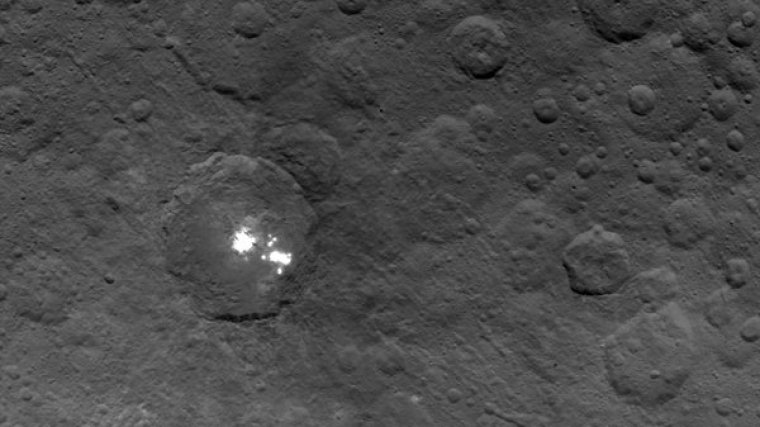| News / Science News |
Bright Spots Shine in Newest Dawn Ceres Images
NASA | JUNE 11, 2015
New images of dwarf planet Ceres, taken by NASA's Dawn spacecraft, show the cratered surface of this mysterious world in sharper detail than ever before. These are among the first snapshots from Dawn's second mapping orbit, which is 2,700 miles (4,400 kilometers) above Ceres.

The brightest spots on dwarf planet Ceres are seen in this image taken by NASA's Dawn spacecraft on June 6, 2015. ![]()
The region with the brightest spots is in a crater about 55 miles (90 kilometers) across. The spots consist of many individual bright points of differing sizes, with a central cluster. So far, scientists have found no obvious explanation for their observed locations or brightness levels.
The bright spots in this configuration make Ceres unique from anything we've seen before in the solar system. The science team is working to understand their source. Reflection from ice is the leading candidate in my mind, but the team continues to consider alternate possibilities, such as salt.
YOU MAY ALSO LIKE



